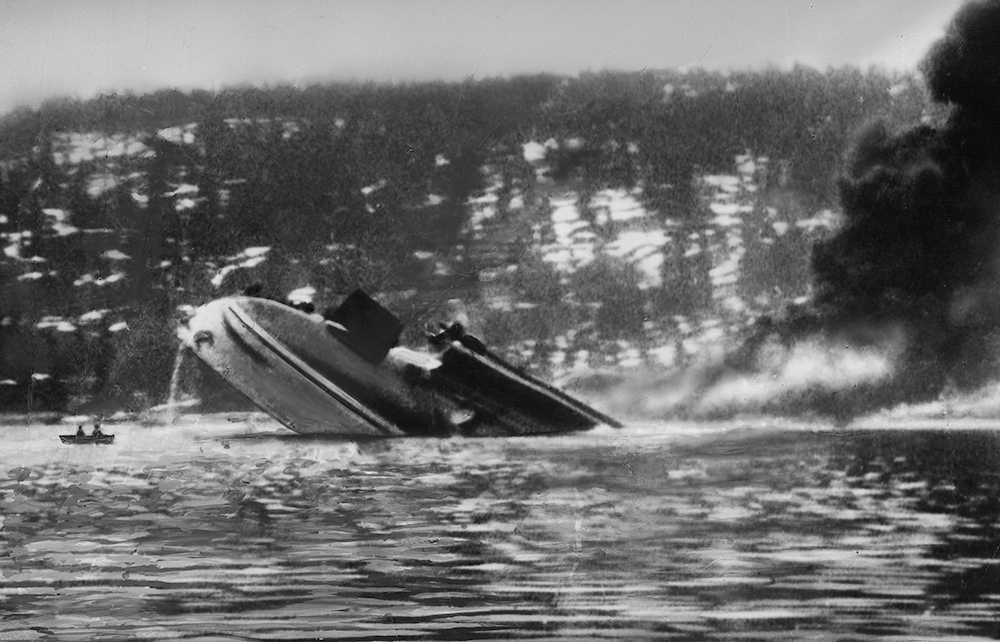In the conclusion to this forensically detailed book, the authors, one a naval historian, the other a retired naval officer who served in the Oscarsborg fortress outside Oslo – the cornerstone of the story – during the Cold War, ask: ‘What would have happened if Hitler had not unleashed his dogs of war on Norway in April 1940, or if Blücher had not been sunk?’ To which of course they reply that we shall never know.
They do, however, posit that in the worst case, Churchill might not have become prime minister, and the evacuation from Dunkirk would not have been the success it was. That’s not entirely new, but it’s not always remembered – Dunkirk especially – or at least not outside the authors’ Norway. The Christmas tree in Trafalgar Square isn’t merely a thank you.
Operation Weserübung, the German invasion of neutral Denmark and Norway, began in the early morning of 9 April. It wasn’t war, said Berlin, but ‘military measures for the protection of the neutrality of Denmark and Norway’. The claim was faintly plausible, as Britain had been trying vigorously to mount a naval blockade to weaken German industry, which was dependent on the import of iron from northern Sweden through the Norwegian port of Narvik. The claim didn’t wash as far as Denmark was concerned, but invading Norway without first neutralising Denmark would have been perilous.
Eriksen reckoned that a darkened warship must reasonably be
taken as enemy
While Denmark quickly capitulated, however, Norway fought. Her forces had been mobilised for some time, not least because of the Soviet threat following the invasion of Finland, and the implications of the Molotov-Ribbentrop pact. Hitler had expected the Norwegian government to surrender, but if not, Vidkun Quisling, the head of the fascist Nasjonal Samling, would stage a coup d’état.
As with Denmark, the key to success would be a coup-de-main operation against the capital, putting the king and his government in the bag. But Oslo was not Copenhagen. To land troops in the heart of the capital meant a long approach up the Oslo fjord, much fortified since the near-war with Sweden at the turn of the century. The German high command had to assume that either the Norwegians wouldn’t oppose the landings, or else they could take them by surprise. But for surprise, all they could rely on was darkness. Full marks for boldness, none for professionalism. The Norwegians were seasoned sailors, unlikely to leave the outer fjord unobserved, and powerful searchlights covered the narrow approaches to Oslo.
Leading the German taskforce was the battlecruiser Blücher, laid down in August 1936 in contravention of the Versailles Treaty, launched in June 1937 and completed in 1939, shortly after the outbreak of war. She had since been engaged in sea trials and training exercises, and hurriedly pronounced ready for service with the fleet on 5 April 1940. But the Kriegsmarine was not the Royal Navy, which one way or another had been continually at sea since 1914. Officers and crews may have been technically proficient, but they hadn’t acquired much fighting seamanship, as the cruiser Graf Spee had discovered in December.
Blücher was accompanied by the heavy cruiser Lützow, the light cruiser Emden and several other troop-carrying ships, darkened and showing no flags; they were spotted in the early hours of 9 April and their progress up the fjord reported, although no positive recognition could be made. In the end it would fall to the commander of Oscarsborg fortress at the southern end of the Drøbak Narrows, the entrance to the inner Oslo fjord and the capital’s harbour, to make the call – the 64-year-old Colonel Birger Eriksen. Contrary to standing orders to fire warning shots first, Eriksen, reckoning that a darkened warship must reasonably be taken as enemy, and, calculating that the fortress would only be able to fire one salvo and one spread of torpedoes, gave the order to open fire. The interlocking secondary batteries followed suit.
The effect was devastating:
Large parts of the [Blücher’s] central superstructure and the battery deck and armoured deck became an inferno as ammunition and explosives from the Army stores detonated, set off by burning aircraft fuel and explosions from the torpedo workshop. Efforts to contain the fires were futile.
On the first day of her first operational sortie, Blücher was sent to the bottom, and with her the decapitation strategy. The royal family and government were able to escape north, and thence to London to continue the fight. The hapless British-French-Polish landings between Trondheim and Narvik to counter the invasion precipitated the ‘Norway debate’ in the Commons in May, from which Churchill emerged as war leader. The Norwegian army and navy continued fighting until 10 June, however. An active campaign on the strategic right flank, not least the Kriegsmarine’s continuing losses, could not but have been a concern to Berlin during ‘Fall Gelb’, the invasion of the Low Countries and France in May.
It is a gripping story, well told, and with excellent photographs and maps.






Comments